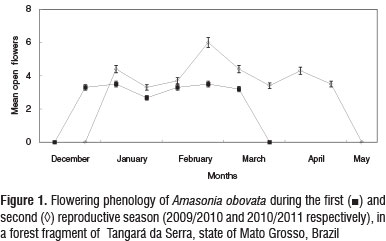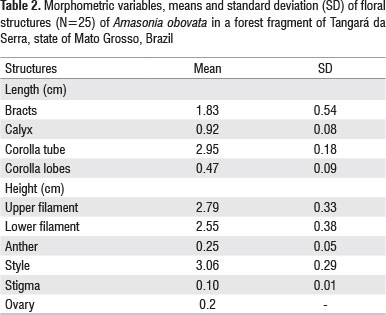Floral mechanisms that ensure seed production via autogamy are more likely to occur in species growing in environments where pollination is scarce. Amasonia obovata was studied in the State of Mato Grosso-Brazil, from 2009 to 2012, to analyze the morphological and reproductive characteristics, aside from investigating the association of the reproductive success with the pollinator frequency and identity. The flowering and fruiting of A. obovata was concentrated in a period of five months during the rainy season. The dichogamy in flowers of A. obovata is not clearly defined, since the sexual functions were overlapped in the male and female phases. The species is self-compatible and not apomictic. The fruiting percentage obtained by hand self-pollination did not differ from cross-breeding (F = 0.74, P =0.39). In the observations from 2010 to 2012, a hummingbird (Thalurania furcata) legitimate visited 20-100% of the flowers in the male and female phases on different A. obovata plants. Due to the high frequency, this hummingbird was considered the single potential pollinator of the species. These findings show that a limited availability of pollinators may select for floral traits and plant mating strategies that lead to a system of self-fertilization.
Autogamy; floral morphology; flowering phenology; hummingbird





